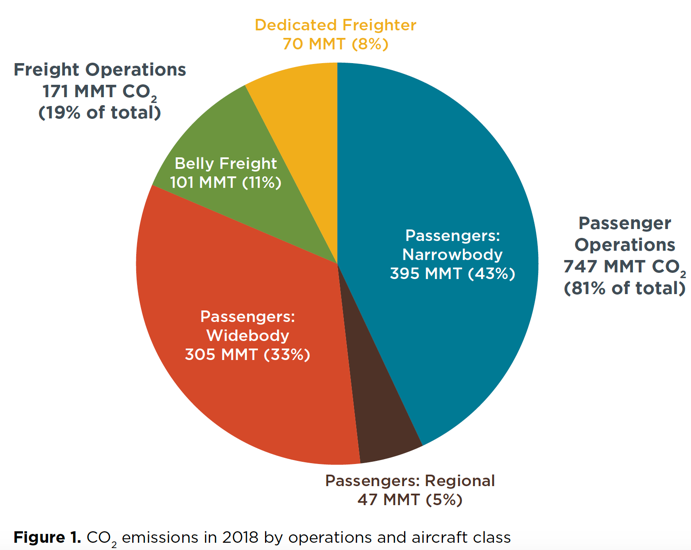Working Paper
CO2 emissions from commercial aviation, 2018
This working paper details and analyzes a global, transparent, and geographically allocated carbon dioxide emissions inventory for commercial aviation for calendar year 2018. It aids policymakers, who cannot currently determine the precise amount of emissions associated with flights departing from an individual country, nor can they distinguish the proportion of emissions from passenger-and-freight and all-freight operations, or from domestic and international flights. The authors provide the data describing passenger operations and CO2 emissions by country in the Excel file below.
Some key findings:
- CO2 emissions from all commercial operations in 2018 totaled 918 million metric tons—2.4% of global CO2 emissions from fossil fuel use. Using aviation industry values, there has been a 32% increase in emissions over the past five years.
- Flights departing airports in the United States and its territories emitted about one-quarter (24%) of global passenger transport-related CO2, two-thirds of which came from domestic flights. The top five countries for passenger aviation-related carbon emissions were rounded out by China, the United Kingdom, Japan, and Germany.
- 43% of CO2 from commercial aviation was linked to passenger movement in narrowbody aircraft, followed by widebody jets (33%), and regional aircraft (5%). The remaining aviation emissions were driven by freight carriage.
Attachments
ICCT_Global-Aviation-CO2-Inventory-2018.xlsx
ICCT_CO2-commrcl-aviation-2018_facts_final.pdf
ICCT_CO2-commrcl-aviation-2018_facts-DE_final.pdf
ICCT_CO2-commrcl-aviation-2018_facts-FR_final.pdf
ICCT_CO2-commrcl-aviation-2018_facts-SP_final.pdf
ICCT_CO2-commrcl-aviation-2018_facts-PG_final.pdf
ICCT_CO2-commrcl-aviation-2018_facts-MN_final.pdf

